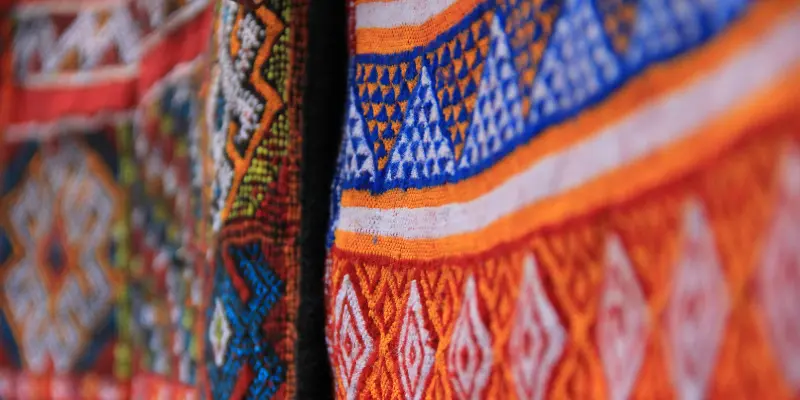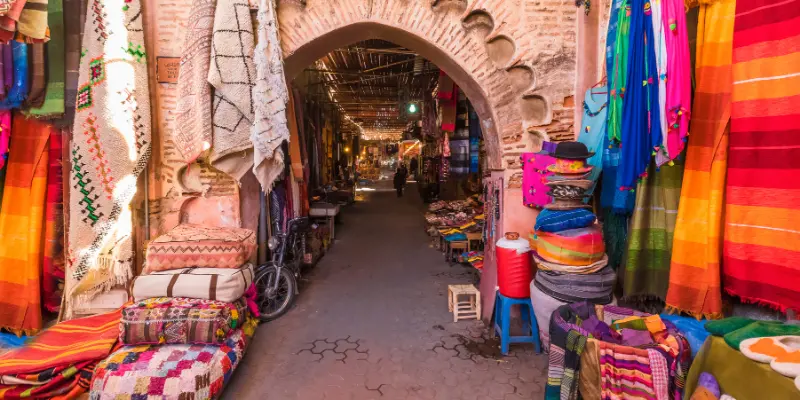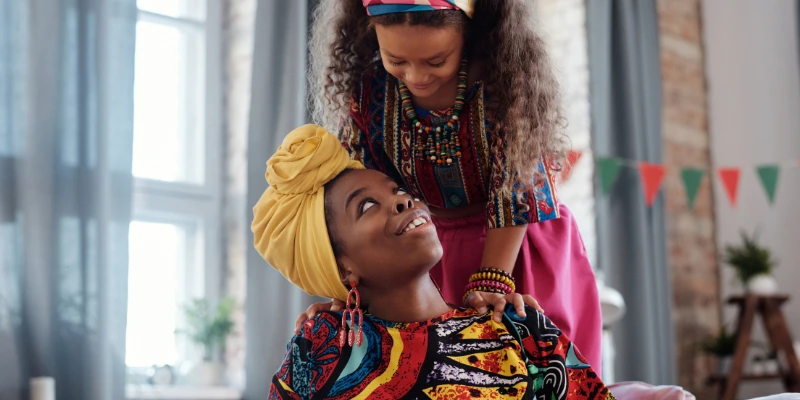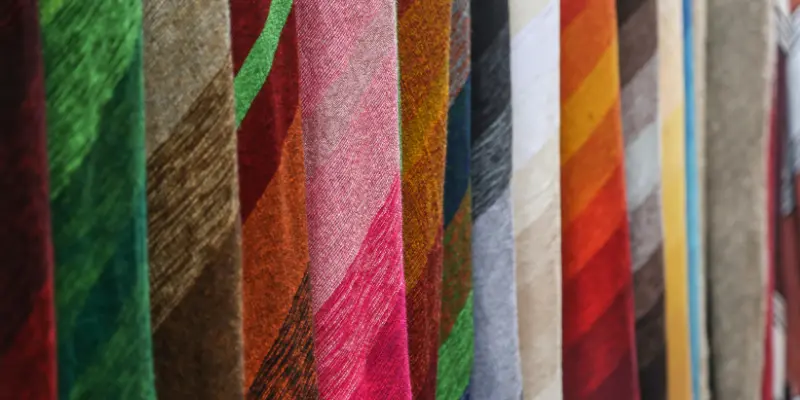Introduction: In this insightful interview, we sit down with Makram Boughattas, a prominent textile expert with extensive knowledge of the industry in Morocco and Tunisia. Mr. Boughattas shares his expertise on various aspects of the textile and fashion sectors in North Africa and beyond. From the unique qualities of Moroccan textiles to the challenges and potential of the African textile industry, this interview provides valuable insights for industry professionals and enthusiasts alike.
Explore Morocco’s Textile Industry:
Learn about the distinctive features that make Morocco’s textile and fashion sector unique.
The textile and clothing industry in Morocco is an activity with strong potential. It occupies a strategic place in the national processing industry both in terms of jobs and exports and in terms of the socio-economic balance of the country. The remarkable performance in terms of growth rate has enabled the textile-clothing sector to position itself today as:
- The leading job provider with an average annual growth rate over the last 10 years of 7.3% against 4.1% for other industries;
- The leading exporter and provider of foreign currency with 11.5% against 9.2%
- The leading investor in the economy with 10.6% against 7.3%
- The first business creator: 4.8% against 3.7% for the other industries.
[highlight color=”yellow”]Despite the difficulties encountered in recent years, in particular, due to the Covid-19 pandemic, the textile and clothing sector achieved a turnover of around 3 billion Euros as the ninth-largest provider of apparel to Europe (2022)[/highlight]
Morocco is a privileged partner of major international groups, such as Inditex, owner of the Zara brand, which has set up their production units in the kingdom. The main markets for Moroccan products are Spain and France.
Morocco is aiming to develop a more ecological, sustainable textile sector that can satisfy the demands of customers who are becoming more concerned with environmental issues.
The Moroccan Association of Textile and Garment Industries (AMITH) designed a new vision called “DAYEM Morocco” which provides a blueprint for the industry’s development with a focus on diversification and sustainability, strengthening the value chain and improving Moroccan textile and garment companies ‘competitiveness.
Despite a thriving textile sector, Morocco still imports 85% of raw materials required for the industry hence the importance of strengthening Morocco’s position on the value chain by moving from subcontracting to the production of products 100% made in Morocco and enjoying competitiveness on the world market.
Assessing North Africa’s Textile and Fashion Industry:
Analyze the strengths and weaknesses of the textile and fashion sector in North Africa.
Advantages
• Strategic position as the closest African country to the EU and to the US
• Highly qualified and well-trained workforce with dedicated training centres & schools
• Competitive minimum wage.
• Important working time (48 hours/week).
• Good flexibility for small and medium orders
• Short lead time
• Strong adaptation to deadlines of Prototyping/Fast fashion/ Reorder.
• A good environment for investment (logistic costs, the technology of information and communication, administrative procedures and customs …).
• A dedicated Textile Technology Parks and Industrial Zones
• Significant incentives for investments
• Strict respect of environmental and social ethic reglementation.
• Compliance with major standards for products and systems and environment standards such as Oekotex, Ecolabel, ISO 14001, ISO 9001, SA 8000,…
• Favorable Trade Agreements (with EU, US, Arab nations, African nations…)
Potential Niches:
• World-famous brands of jeans are made in Tunisia & Morocco.
• Knitted tops (seamless) with large added value and sportswear with a high degree of performance.
• Mid and high-quality lingerie products using innovative fabrics, delicate laces and microfibers…
• High technological Workwear and Protective clothes (firefighters and surgeons suites).
• Technical and functional Textiles (airbags, sails, medical, …)
Challenges:
• The North African textile industry needs to diversify its products and move beyond its main current markets and look instead at export opportunities in, Eastern Europe, the Middle East, Scandinavia and sub-Saharan Africa
• New investments particularly in the upstream sectors (spinning, weaving, technical textiles)
• Development of innovation and research to ensure added value products.
• Migration of companies from sub-contracting to co-contracting and manufacturer of finished product
• Local market manufacturers should be encouraged and protected against grey market and massive low-cost importation
• The government should protect the domestic market from Asian and Turkish products by increasing import taxes
• The North African governments should grant an export bonus (like the practices of certain countries in the region: Turkey, Egypt, etc.) while renegotiating advantageous trade agreements (rules of origin)
• Encourage public-private partnerships: The government can collaborate with private players in the textile sector to develop common strategies, share investment costs in large-scale projects and benefit from complementary expertise
• Reduce the energy bill of upstream textile companies and their carbon footprint (need to connect to the green energy circuit)
Unleashing Africa’s Textile Industry Potential:
Exploring avenues for the growth and development of the textile sector across the continent.
The fashion and textile industry is the second largest sector after agriculture in Africa, having an estimated market value of $31 billion in 2020 and growing every year
Despite the diversity of the African textile market, cotton seems to be the most consistent material in the country. 6 countries produce cotton under the label “Cotton Made by Africa,” which is one of the largest job producers, employing over 450,000 Africans in the cotton industry.
Additionally, South Africa has become involved in technical textiles by supplying hemp to aeronautics companies. Countries like Ethiopia are also starting to win over textile factories that employ locals and help companies trying to escape rising wages in countries like China. Companies like H&M have opened factories in Africa because their wages are lower and the population can support the necessary workers.
To develop its textile market, Africa needs its cotton as a majority (more than 95%) of cotton production is exported outside Africa while North African countries (heavy importers of cotton) are importing their cotton from outside Africa.
Challenges:
• Cotton-producing countries must limit the export of cotton and retain at least 25% of their production
• Connecting North Africa & Sub-Saharan Africa
• Huge Potential based on complementarily between North and Sub-Saharan in the all Value Chain of the TC sector
• Development of new potential niches such as Technical textiles (work wear for oil companies..)
• Transfer of Know-How between North Africa and Sub-Saharan Africa
• Access to the US market by using the AGOA convention for North Africa manufacturer
• Access to the African market through a triangulation relationship (companies from UE, North Africa, and Sub-Saharan).
• Access to intra-African market by eliminating barriers to trade through the AfCFTA agreement
(The African Continental Free Trade Area)
• Access to the African market through the COMESA agreement (the Common Market of Eastern and Southern Africa)
• Repositioning on the EU market (increase market share).
• Increase the investment by Joint venture
Discovering Moroccan Traditional Attire:
A closer look at the unique and culturally rich clothing traditions in Morocco.
Moroccan clothing is full of rich traditions and many of the clothes worn by locals are an integral part of the culture and Moroccan identity:
• The KAFTAN Historically, it was the ceremonial dress of judges.
Kaftans are usually ornate and decorative, with beautiful braiding, beads, and sequins sewn onto luxurious fabrics, it is made from various materials, including wool and cotton, but the fanciest kaftans are made from fine silk or luscious velvet.
• The DJELLABA: may be found in other North African countries as well as , but it is still one of the most commonly worn items of clothing by Moroccans. It can be worn by both men and women. The djellaba is a long and loose type of robe that is often worn over the top of other clothes. It has long sleeves and a pointed hood. The hood helps to provide shade in the sun and keeps people warm in the cold.
• The GANDORA: is similar to a djellaba, with the major differences being that it has shorter sleeves and does not have a hood. It can be worn by people of both sexes and comes in various colours
• The TACKCHITA: is the most formal and beautiful ladies’ garment. It is not an item for everyday wear but is reserved for special occasions such as weddings. As with fancy kaftans, the Tackchita often has stunning designs and details. A two-piece item of clothing, it has an under-dress and an over-dress.
• The ABAYA is a standard item in almost every Moroccan woman’s wardrobe. An overlayer, it is worn on top of other clothes to hide the lady’s figure when she’s out . A long and loose item that is rather similar to a cloak, it covers the entire body save for the head, feet, and hands.
• The TAHRUYT is a large embroidered scarf-cum-headdress that is often worn by Berber ladies, especially those that live in more remote mountain areas. It is comprised of two pieces of cloth, usually dark in color that have been stitched together and adorned with colourful and intricately embroidered details.
• The TARBOUCHE is a rigid hat with a tassel and it rather resembles the lower part of a cone. It is worn by some men in Morocco and is also part of some official uniforms
• The TAGUIA is another type of male headwear; it is similar to the Jewish kippah, a short and rounded skullcap. It is a symbol of religious devotion for Muslims. Most commonly white, it can, however, be found in an array of colors
• The BALGHA also known as the babouche, the balgha is a traditional type of shoe in Morocco. Soft and slipper-like, the leather footwear can be worn both inside and outdoors. (It’s still normal, though, to take shoes off when walking on carpets in a home.)
• The DARAA: is the main TUAREG man dress living in the Sahara desert in the south of Morocco, it is a wide tunic open on both sides, has a breach in the chest with a pocket
• The CHEICH: It is a kind of scarf wearied on heads and around necks to protect against sun and sand
• The MALHFA: It is traditional Moroccan Tuareg women’s dress
• The traditional BERBER clothes: dress set, women& men babouche and the chachi ya
Evaluating Second-Hand Clothing Business in Africa:
Examining the pros and cons through the lens of an African sourcing expert.
It is called by many environmentalists: the poisoned gift.
With 34% of total world exports, sub-Saharan Africa is the number one destination for used clothing on a global scale. The sector generates several million jobs on the continent, all along its value chain
African second-hand clothing imports recorded a 28.84% increase in 2021 to $1.84 billion.
The increasing production of fast fashion apparel has led to increasing amounts of second-hand clothing being exported to African countries.
The second-hand clothing industry has emerged as a major sector in Africa’s economy as it creates jobs involving handling, alterations, refinements, and distribution of second-hand clothes helping increase consumer purchasing power and generating important tax revenue for African countries.
Domestically produced clothes are mostly expensive and low-quality while second-hand clothing imported from Western countries fulfills the demand of the African people by providing them with affordable, trendy, and good-quality clothes.
Furthermore, Second-hand clothing has also promoted the work of businesses in the fashion industry, who repurpose and up-cycle second-hand clothes to produce new products of higher value.
But the second-hand clothing market also has a darker side: many of these clothes, especially those of poor quality, are not resold and end up in open dumps.
Big brands are dumping millions of tons of used clothing and textiles of such poor quality that they are immediately sent to dump sites polluting the environment, posing health risks, and contributing to the climate crisis.
Furthermore, the increased import of second-hand clothing has resulted in reduced demand for domestic clothing, an issue that hinders the recovery of the African textile industry.
Many African countries are indeed bound by international agreements (AGOA) like in 2016 when Kenya, Tanzania, and Uganda tried to increase tariffs on American second-hand clothes, but they were called to order by Washington, under pressure from the second-hand lobby, a market which weighs several billion dollars in the world.
While the textile industry represents 8% of global greenhouse gas emissions, the urgency is above all to consume less. $460 billion worth of usable clothes are thrown away every year, according to the United Nations Environment Program.
My recommendation is the invest in the recycling industries and we can impose to each country exporting used clothes to pay (or participate) a symbolic amount for the benefit of companies that offer recycling in Africa.
Unlocking the Global Appeal of African Textile Designs:
Understanding the factors driving the rising demand for African textile trends worldwide.
Through AGOA (American Growth and Opportunity Act), the United States has opened its market to African products, with textiles taking the lion’s share where it offers sub-Saharan garment exporters to the US market duty-free access which is great leverage on ineligible members such as Asian countries., reducing production costs, which gives the US market a better option for African textile products such as baby clothes, grey fabrics, spun cotton yarn, wool, gin cotton, etc.
The route taken by many African countries to advance their economies through policy reforms, and structural adjustments such as employing appropriate technology, sensitization, government partnerships, inter-continental trade agreements, value chain addition, and infrastructure development has greatly attracted a lot of Foreign Direct Investments in the last 10 years giving the textile industry a bonus since it has been put under targets by investors as a lucrative sector due to low costs of production, cheap labor, adequate raw materials and so on.
This progress gives textile players from the African continent a firm ground to overcome the bottlenecks that have been hindering the sector’s progress and to compete favorably with other players especially Asian countries, China in particular which has become a global threat in the textile industry.
The African fashion industry has started to expand due to growing interest in Africa’s cultural traditions, including its vibrant hues and colourful fabrics, such as wax and printed dyed cotton, and the high quality of craftsmanship in African cultures.
The industry and its designers, both on the continent and abroad, are capitalizing on this situation, with Africa-inspired designs now regularly shown on the catwalks in fashion shows in Paris, London and Milan. Additionally, demand for African fashion is likely to be further boosted by the continent’s growing urban middle class, opening up the perspective of sustainable growth for the African fashion industry
Demand for African textiles and clothing is growing globally and African designs are increasingly recognized as truly fashionable and iconic pieces. International fashion houses are increasingly incorporating African influences into their latest collections.
There’s a strong tradition of craftsmanship and textile heritage and an emerging cadre of designers
and entrepreneurs in the fashion space, coupled with a lack of penetration by foreign clothing brands
The African designs are promoted all over the world by many style icons who are from the same ethnicity or who support the community. The culture of the country is represented and celebrated through these clothing lines promoted all over the fashion industry. African designs are required by designers all over the world because of the value they hold in the market.
African Fabric Designs have been the talk of the town for ages because of the creativity and authenticity the designs hold, attracting consumers of all ages and ethnicities and trendsetters.
African fabric is unique and has a high selling point because of its abstract beauty and aesthetics. Many artists use their traditional values and teachings while creating such designs, which makes these designs eagerly followed.
Examples of traditional and authentic fabric & designs:
• Hand-dyed batik prints which are produced in Ghana
• African Wax Prints is an extremely traditional wing of African fabric design
• African sun prints are created from dyes and other leaves that leave great colors on the fabric
• KENTE is one of the most popular types of fabric that is used to make shawls or similar products
• KHASA, strip-woven woollen textiles made by the nomadic Fulani people.
• ADIRE, a kind of indigo resist-dyeing perfected by Yoruba women in southwestern Nigeria; and in Igboland (the southeastern part of the country),
• AKWETE, a hand-woven textile often made from combinations of cotton, sisal and raffia.
Additional Insights for EMEA Readers:
«AFRICA CAN DRESS AFRICA», it is the textile industry that will radically change Africa.
As an expert in sourcing, I highly recommend to textile professionals or those interested in the sector or in African fashion, to visit the professional textile & fashion shows organized in Africa. There are plenty of opportunities and creativities
The above example of African shows:
• MAROC IN MODE (Morocco)
• DESTINATION AFRICA (Egypt)
• INTERTEX TUNISIA (Tunisia)
• TEXSTYLE EXPO (Algeria)
• SITA, Salon International du Textile Africain (Ivory Coast)
• SIMOA, Salon international de la mode africaine (Ivory Coast)
• ALL FASHION SOURCING (South Africa)
• ASFW, Africa Sourcing Fashion Week (Ethiopia)
• SWAHILI FW (Tanzania)
• EATLW, East Africa Textile and Leather Week (Kenya)






















